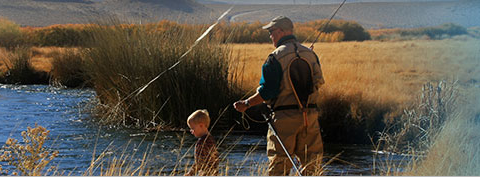Knee
Proximal Tibiofibular Ligament Instability
The proximal tibiofibular joint (PTFJ) is the articulation of the lateral tibial plateau of the tibia and the head of the fibula. The fibular head lies in an angled groove behind the lateral tibial ridge, which helps to prevent anterior fibular movement with knee flexion [7]. The proximal fibula moves posteromedial with knee extension. The anterolateral and posteromedial sliding movement of this joint reduces torsional forces from the ankle, prevents lateral bending of the tibia, spreads the axial load while standing, and helps to stabilize the knee [2]
To know more about Proximal Tibiofibular Ligament Instability click on tab below.
Normal Anatomy of the Knee Joint
The knee is made up of four bones. The femur or thighbone is the bone connecting the hip to the knee. The tibia or shinbone connects the knee to the ankle. The patella (kneecap) is the small bone in front of the knee and rides on the knee joint as the knee bends. The fibula is a shorter and thinner bone running parallel to the tibia on its outside. The joint acts like a hinge but with some rotation.
To know more about Normal Anatomy of the Knee joint click on tab below.
Posterolateral Corner Knee Injuries
Posterolateral corner (PLC) knee injuries commonly result from a force directed at the anteromedial aspect of the knee with the foot planted firmly on the ground. Injuries are notoriously difficult to diagnose, treat and understand due to the complex anatomy comprising the posterior lateral corner. PLC injuries comprise approximately 16 % of ligamentous knee injuries and nearly 75% of PLC injuries are identified with concurrent damage to either the anterior (ACL) or posterior cruciate ligament (PCL).
To know more about Posterolateral Corner Knee Injuries click on tab below.
Trochlear Dysplasia and Trochleoplasty
Individuals who have recurrent patellar dislocations and do not have patellofemoral arthritis or signs of trochlear cartilage wear are potential candidates for a trochleoplasty. During this procedure, the lateral capsule is opened and the patella is retracted medially to access the trochlea. The periosteum and trochlear cartilage are detached from the subchondral bone as a flap and a new trochlear groove is modeled into the exposed subchondral bone. The chondral flap is then replaced over the newly formed groove and sutured into place. MPFL reconstruction or tibial tuberosity osteotomy may also be performed during the procedure, if indicated.
To know more about Trochlear Dysplasia and Trochleoplasty click on tab below.
Meniscus Tear
Meniscus tear is the commonest knee injury in athletes, especially those involved in contact sports. A sudden bend or twist in your knee can cause the meniscus to tear. This is a traumatic meniscus tear.
To know more about Meniscus Tear click on tab below.
Anterior Cruciate Ligament Tear
The anterior cruciate ligament, or ACL, is one of the major ligaments of the knee.It is located in the middle of the knee and runs from the femur (thigh bone) to the tibia (shin bone). It prevents the tibia from sliding out in front of the femur. Together with posterior cruciate ligament (PCL) it provides rotational stability to the knee.
To know more about Anterior Cruciate Ligament Tear click on tab below.
Patellofemoral Instability
The knee can be divided into three compartments: the patellofemoral, and the medial and lateral compartments. The patellofemoral compartment is the compartment in the front of the knee between the knee cap and thigh bone.
To know more about Patellofemoral Instability click on tab below.
Arthroscopy of the Knee Joint
Knee Arthroscopy is a common surgical procedure performed using an arthroscope, a viewing instrument, to look into the knee joint to diagnose or treat a knee problem. It is a relatively safe outpatient procedure, and is one of the most common surgical procedures performed throughout the United States.
To know more about Arthroscopy of the Knee Joint click on tab below.
Total Knee Replacement (TKR)
Total knee replacement, also called total knee arthroplasty, is a surgical procedure in which the worn out or damaged surfaces of the knee joint are removed and replaced with artificial parts.
To know more about Total Knee Replacement click on tab below.
Uni condylar Knee Replacement
Unicompartmental knee replacement is a minimally invasive surgery in which only the damaged compartment of the knee is replaced with an implant.
To know more about Uni condylar Knee Replacement click on tab below.
Revision Knee Replacement
Revision knee replacement surgery involves replacing part or all of your previous knee prosthesis with a new prosthesis. Although total knee replacement surgery is successful, sometimes the procedure can fail due to various reasons and require a second revision surgery.
To know more about Revision Knee Replacement click on tab below.
Minimally Invasive Knee Joint Replacement
Total knee replacement is a very successful surgical treatment for knee arthritis. Over the years, minimally invasive knee replacement surgical techniques have been developed to lessen tissue trauma and improve patient outcomes.
To know more about Minimally Invasive Knee Joint Replacement click on tab below.
ACL Reconstruction
ACL reconstruction and is one of the most commonly performed knee surgeries in the United States today. The new tissue required for reconstruction is called a graft and it can come from your own tissue (autograft) or from a cadaver (allograft). There are various advantages and disadvantages to the different types of graft and the decision making process is individualized based on your sporting activity, age, other injuries to the knee and your own preferences. Click on the patient info tab for graft choices and we describe our rationale for our preferred method for autograft ACL reconstruction – the quadriceps tendon.
To know more about ACL Reconstruction click on tab below.
BEAR® Implant
Mammoth Orthopedic Institute and Mammoth Hospital is pioneering the use of a breakthrough technology called the BEAR® Implant for treatment of anterior cruciate ligament (ACL) tears, one of the most common knee injuries in the U.S.
To know more about ACL Reconstruction click on tab below.





















